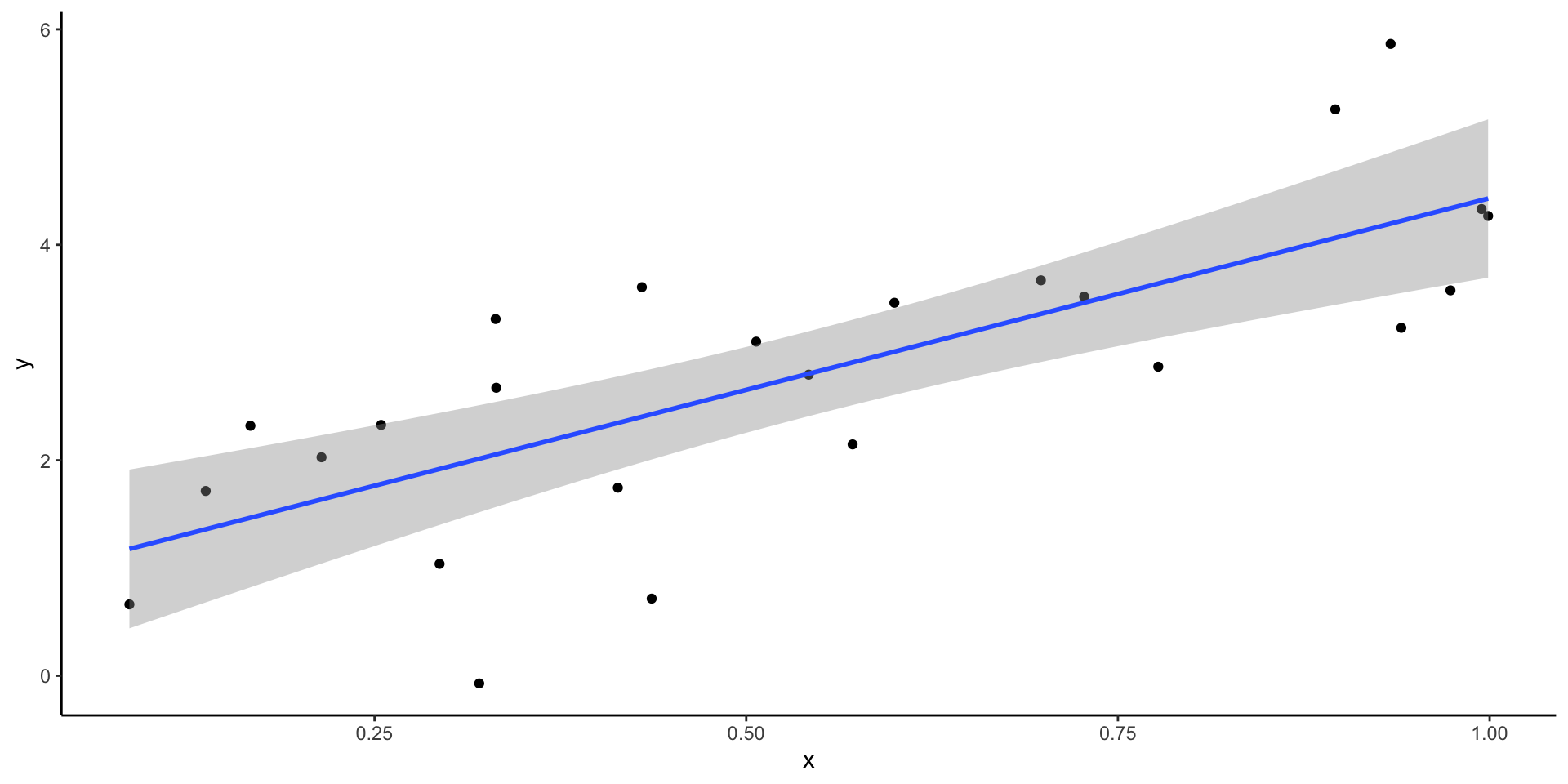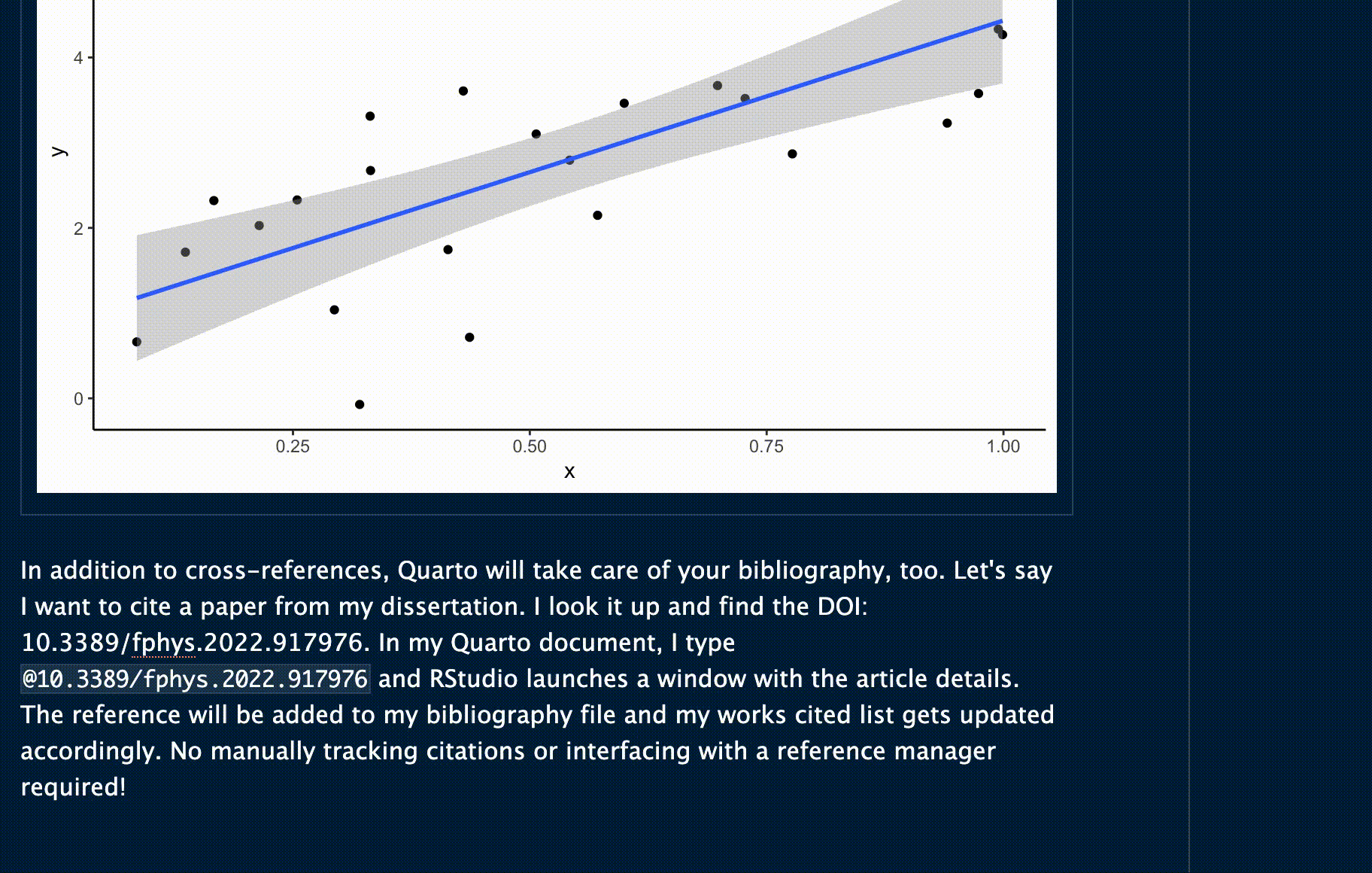```{r}
#| label: fig-regression
#| fig-cap: y is correlated with x, isn't that swell?
set.seed(1057)
dat <- tibble(
x = runif(25),
y = 3 * x + 1 + rnorm(25)
)
ggplot(dat, aes(x, y)) +
geom_point() +
geom_smooth(method = "lm", formula = y ~ x) +
theme_classic()
```

